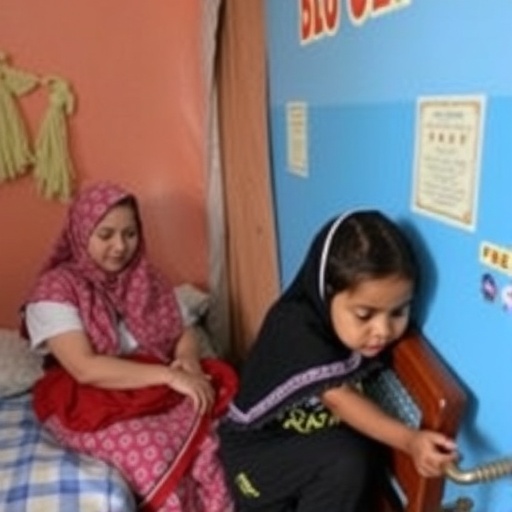In recent years, significant shifts in demographic trends have caught the attention of researchers and policymakers alike. A comprehensive study conducted by Cabella and Velázquez investigates the phenomenon of declining fertility rates across five Latin American countries, specifically drawing attention to the nexus between education levels and fertility trends from 2010 to 2022. This extensive exploration not only highlights the stark contrasts among different educational demographics but also provides a window into the broader societal changes that accompany such shifts.
As countries across Latin America experience transformative social dynamics, the implications of decreasing fertility rates reflect deeper issues at play. Understanding these trends requires an examination of various contributing factors, including socioeconomic development, cultural attitudes towards family and child-rearing, and the role of women’s education in shaping reproductive choices. Education emerges as a crucial variable, influencing not just individual choices regarding family size but also broader public health and economic outcomes.
The findings of Cabella and Velázquez paint a nuanced picture of fertility trends in the region. Couples with higher educational attainment tend to delay childbirth, contributing to reduced fertility rates overall. This behavioral change signals a shift in priorities, with many individuals choosing to invest more in their careers and personal development before starting families. With enhanced access to education, especially for women, the landscape of fertility has evolved dramatically in a short span of time.
Furthermore, the research reveals stark differences in fertility rates among educational strata. For instance, women with higher education levels exhibit significantly lower fertility rates than those with minimal or no education. The implications of this finding cannot be overstated; as education becomes more widely accessible, it not only impacts individual life’s choices but also serves as a transformative societal force that reshapes family structures and community dynamics.
The region’s historical context plays a pivotal role in understanding these trends. Latin America has undergone rapid urbanization and economic changes in the last few decades, leading to shifting social norms around family and marriage. These transformations inevitably intertwine with educational opportunities available to women, who have increasingly entered the workforce and pursued higher education. As a result, there appears to be a direct correlation between increasing educational attainment among women and the decline in fertility rates.
Another salient point in this study is the role of government policies in shaping educational accessibility. Many Latin American governments have launched initiatives aimed at boosting female education, directly correlating to improved social and economic outcomes for families. By promoting educational reforms and access, these governments inadvertently contribute to the observed decline in fertility rates. The study serves as a critical reminder of the power of policy interventions in influencing demographic changes.
Moreover, the emphasis on education generally points to a more profound cultural shift concerning family planning and reproductive health. Traditionally, larger families were often seen as advantageous, a notion deeply rooted in cultural and economic factors. However, as educational opportunities broaden, particularly for women, a growing number of families are choosing to prioritize quality over quantity regarding their children, reflecting a significant cultural reorientation.
The complexities of these findings extend into the realm of public health as well. A decliing fertility rate does not simply indicate a change in personal choices; it also impacts healthcare systems, economic resources, and social services. This declining trend necessitates a re-evaluation of resource allocation by governments and health agencies who must now contend with a smaller, yet increasingly diverse population age structure.
Investigating further, the socioeconomic impact of low fertility rates is substantial. As the workforce ages and fewer young individuals enter the labor market, economies may face considerable challenges, including labor shortages and increased pressure on social systems. Policymakers must therefore keep these potential ramifications in mind as they design future educational and economic policies.
In addition to socioeconomic conditions, the authors highlight the integration of technology and media as influential forces shaping contemporary views on family and education. The rise of digital platforms has facilitated the dissemination of information, empowering young people to make informed choices about their reproductive health. This technological influence represents a vital layer in understanding the complexity of fertility decisions made across diverse demographics.
Finally, the implications of declining fertility in Latin America serve as a case study for other global regions experiencing similar trends. As societies worldwide navigate the sociocultural landscape, understanding this unique intersection of education and fertility can provide valuable insights for policymakers aiming to foster supportive environments for families while addressing challenges posed by shifting demographics.
In conclusion, the research by Cabella and Velázquez underscores the interplay between education and fertility rates in Latin America, revealing critical insights about societal transformation in the wake of increasing educational attainment. As we move forward, it remains essential to monitor these trends and understand their implications for the future development of societies, health systems, and economies.
Subject of Research: Fertility rates and educational attainment in Latin America
Article Title: The recent decline to very low fertility levels by education in five Latin American countries (2010–2022)
Article References:
Cabella, W., Velázquez, C. The recent decline to very low fertility levels by education in five Latin American countries (2010–2022).
J Pop Research 42, 53 (2025). https://doi.org/10.1007/s12546-025-09406-w
Image Credits: AI Generated
DOI:
Keywords: Fertility rates, Education, Latin America, Demographic changes, Socioeconomic impact, Public health, Cultural norms.




